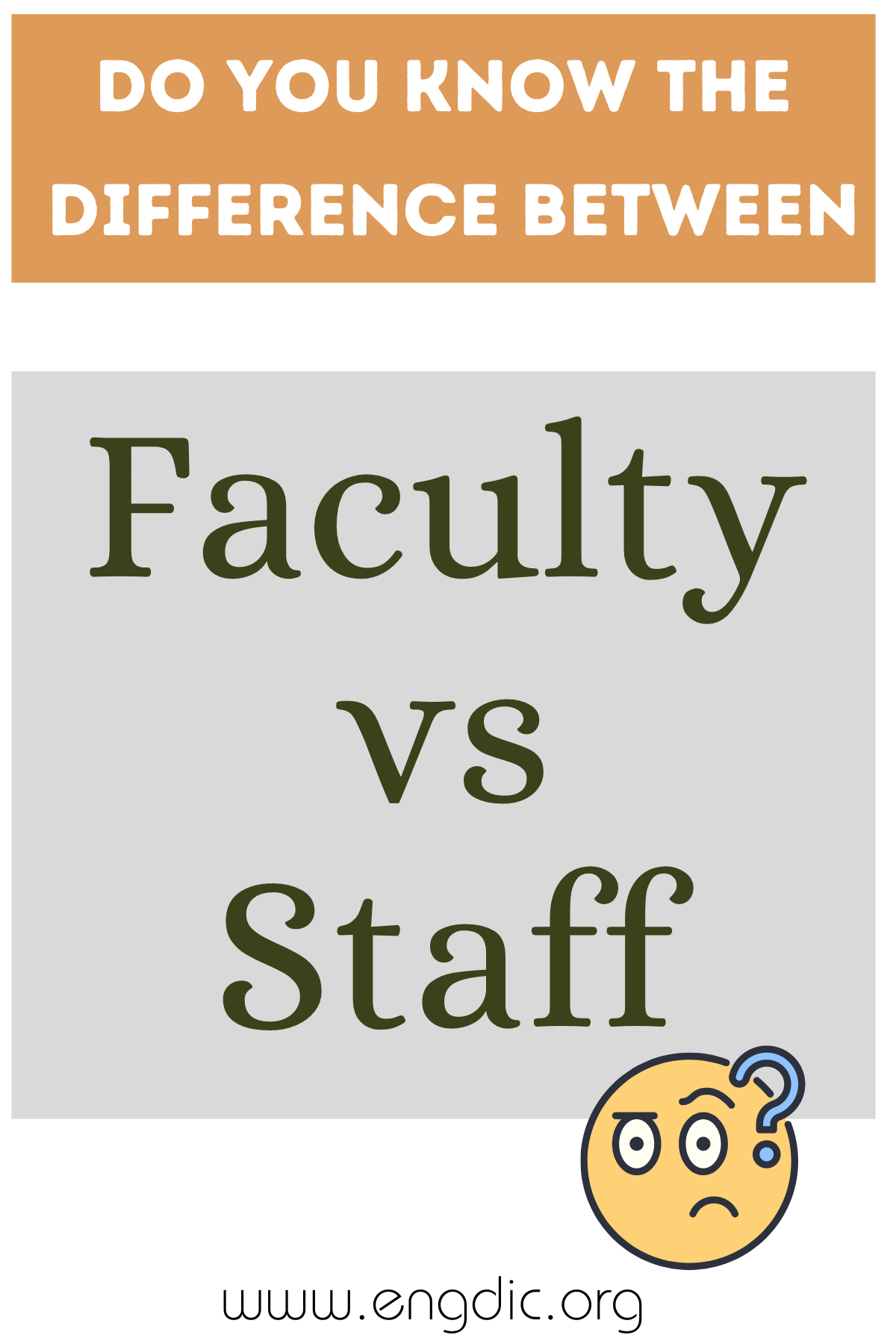The terms “faculty” and “staff” are often used interchangeably, but they refer to distinct groups within an educational institution.
- Faculty generally consists of academic professionals, such as professors and lecturers, who are primarily involved in teaching and research.
- Staff, on the other hand, encompasses non-academic personnel who handle administrative, technical, and support roles crucial for institutional operations.
Faculty shapes the academic environment through curriculum development and student engagement, staff ensures the smooth functioning of the institution by managing its logistical and infrastructural needs.
Faculty
Definition: Faculty refers to the teaching and research personnel in educational institutions. This group typically includes professors, lecturers, and researchers.
Usage:
- Teaching: Faculty members are responsible for teaching courses in their area of expertise. For instance, a history professor (faculty) might teach courses in modern European history.
- Research: Many faculty members conduct research in their fields. For example, a biology professor (faculty) may publish research papers on genetics.
- Academic Leadership: Faculty often participate in administrative roles, such as department heads or program directors, guiding curriculum development and academic policies.
- Advising: Faculty frequently advise students on academic matters, offering guidance on course selections and research projects.
Examples:
- The faculty at XYZ University recently published a groundbreaking study on climate change.
- Dr. Smith, a faculty member in the English department, is teaching a seminar on Shakespearean literature this semester.
Staff
Definition: Staff refers to the non-academic personnel who manage administrative, technical, and support services in an institution.
Usage:
- Administration: Staff members work in administrative roles such as registrars, human resources, and finance, ensuring the institution operates smoothly.
- Technical Support: IT staff maintain the technological infrastructure, including networks, software, and equipment necessary for daily operations.
- Maintenance: Facility staff handle the maintenance and security of the institution, ensuring a safe and functional environment.
- Student Support: Staff in student services provide support in areas like counseling, admissions, and career services.
Examples:
- The IT staff upgraded the university’s internet network to improve connectivity for students and faculty.
- The admissions staff is responsible for processing student applications and answering enrollment inquiries.







